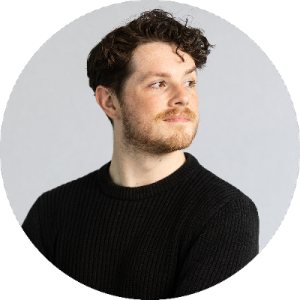
Eoin Russell
Finalist
“Gain switched dual frequency comb at 2 μm”
1. What encouraged you to submit your application to the 2021 Postgraduate Research Publication of the Year?
As this paper was my final publication from my PhD, I wanted to do whatever I could to increase the visibility and interaction with the publication. The Postgraduate Research Publication of the Year competition seemed like a great way to get exposure for the publication and increase engagement with the research I carried out.
2. What inspired you to choose the subject of your paper?
I was interested in optical frequency comb (OFC) generation as it has numerous applications in high impact fields like optical communications, silicon photonics and optical sensing. As my previous research had focused on photonic technologies operating in the 2 µm wavelength region, I knew there was a lot of potential for an OFC source at this wavelength. Optical sensing of key gasses like Carbon Dioxide, Methane and Ammonia could be enhanced using a 2 µm OFC source, enabling both environmental and medical applications. I decided to pursue this research as I found both the physics and potential applications to be interesting and engaging.
3. What’s your paper about and how did you prepare for it? What role did research excellence play in your approach?
The paper covers the development of a dual frequency comb operating in the 2 µm wavelength region. A dual frequency comb uses the electrical spectrum generated by combining two optical frequency combs to enable rapid acquisition of the OFCs spectral information. The goal of dual frequency comb development is to enable spectroscopy applications which rely on frequency combs by vastly reducing the complexity, size and time required for the analysis of their spectra. Achieving this would allow for the development of technologies like high accuracy compact optical sensors that can perform measurements in near real-time.
4. The selection for Research Publication of the Year is extremely competitive. What is your advice for those aspiring for nomination next year?
I think one of the most important parts of producing high quality research is to pursue a project that you find genuinely interesting. If you find what you are doing to be interesting and worth studying, this will come across in your work.
5. What is the single most significant support Tyndall has been able to offer you in achieving your research goals? (Please provide any detail on additional supports that assisted? How has Tyndall enabled you to fulfil your potential in this regard?)
Beyond the access to state of the art equipment, the primary support Tyndall offered was access to a group of talented researchers. Engaging with people who are both starting their research journey and people who are well established in their fields has given me a lot of insight into my own research. The cross-pollination that happens between different scientific disciplines at Tyndall results in many unique perspectives influencing your work. For me, this has been invaluable for my research.
Eoin Russell; Brian Corbett, Fatima Gunning, “Gain switched dual frequency comb at 2 μm”, Optics Express (Optica), Vol. 30, Issue 4, pp. 5213-5221 (2022).